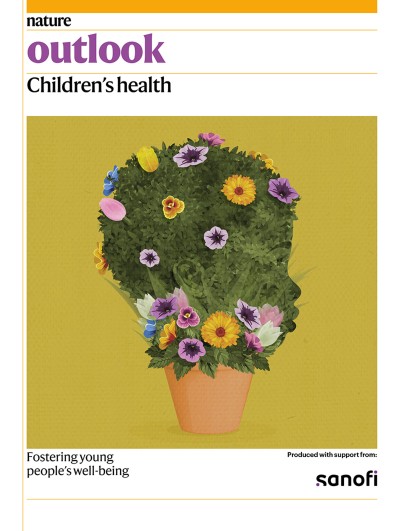[ad_1]

Maartje Boer.
Does frequent engagement with social media platforms like Instagram, Snapchat, and TikTok affect adolescent well-being? Maartje Boer, who studies problematic social media use and is based at Utrecht University in the Netherlands, says that for many teenagers, social media may not be as harmful as some adults fear.
How do you define social media addiction?
Social media addiction is not yet recognized in a diagnostic manual, but we define it using nine addiction symptoms, similar to Internet gaming disorder. For example, one symptom is worry, when someone constantly thinks about when they can use social media again. Another is withdrawal. It’s when someone feels anxious or stressed because they can’t use social media. Another example is when someone shifts important activities to use social networks. For example, they lose interest in hobbies such as sports activities or neglect school work. When six or more addiction symptoms are present in an adolescent, we define their social media use as problematic. My research group’s work disentangles the relationship between problematic social media use and frequency of social media use, and how these factors relate to adolescent well-being.

Part of Nature Outlook: Children’s Health
Is frequent use of social media harmful?
In our research, we have seen that when a teenager shows symptoms of addiction, then there is cause for concern. But spending a lot of time on social media isn’t necessarily a concern. In the Netherlands, most 11- to 16-year-olds, for example, show a high intensity of use and spend a lot of time on social media without any addiction-like symptoms. The proportion of teenagers who use social media is problematic is small: in the Netherlands in 2021, 5.3% of 11-16-year-olds showed more than 6 addiction-like symptoms (see go .nature.com/3uvmpzw; in Dutch). We also looked at the behavior of 11- to 15-year-olds in Europe and Canada, using data from 2017 and 2018, and on average 7.6% showed a problematic number of symptoms1.
So are parents’ concerns misplaced?
I don’t mean that heavy use isn’t a concern at all. In another study, we distinguished three groups: normative users, who have one or no symptoms; users at risk, who present between 2 and 5 symptoms of addiction; and problematic users, who present between 6 and 9 symptoms2. In the Netherlands, around 30% of young people are in the medium risk group. We see that these teenagers experience more problems with sleep, mental health and school. We can tell from our research that the more addiction symptoms a teenager has, the more likely they are to experience these problems. So even though the percentage of teens who show problematic use is low, when some symptoms are present there is still cause for concern.
Are there positive effects of using social media?
As part of an international effort in 2017 and 2018 to study mostly European and Canadian teenagers, we found that youth who are heavy users (those who use social media throughout the day to communicate with friends) report more peer support than intensive. users 3. So here we see the beneficial effects of intensive use of social networks. The exception is for people whose use of social networks is problematic: those who show many symptoms of addiction. They have less support from friends than non-problem users.

More from Nature Outlook
For other indicators of well-being, the results were more nuanced. For example, in countries where heavy use was common, because the percentage of heavy users was high in the adolescent population, heavy users reported higher life satisfaction than non-heavy users. In countries where heavy use was infrequent, heavy users report lower life satisfaction than non-heavy users.
What is your advice for parents who are concerned about social media use?
Many teenagers in many countries use social networks intensively; this is standard behavior and often not a cause for concern. Our research has found that social media can contribute to certain aspects of adolescent well-being. Young people share their experiences and feelings on social networks, and can talk to their friends, which is important for the development of their identity. Neglecting this could lead to friction: if a parent consistently frames social media use in a negative way, young people may not feel understood, as suggested in some qualitative studies published in recent years4,5 . But it’s important to recognize when social media use is becoming problematic, because we see all the time that this can have harmful effects.
Parents may want to take away a smartphone if they feel their child’s engagement with social media is problematic. But research6 suggests that reactive restrictions like this, as opposed to preventive measures, may not be the best strategy. Social media plays important roles in their daily lives, and you don’t want your teen to feel isolated. For example, they may be using WhatsApp to contact classmates and teachers about school. As a parent, it may be best to focus on how to regain control over social media use and plan this together with your child. But I have to say that there isn’t a lot of research on what specific interventions will help teens with problematic social media use, because the field is still developing criteria for what is problematic.
[ad_2]Source: Social media use is not always a problem for children
Methadone Clinic Nearby – Methadone Clinics New York – Methadone Clinics USA















